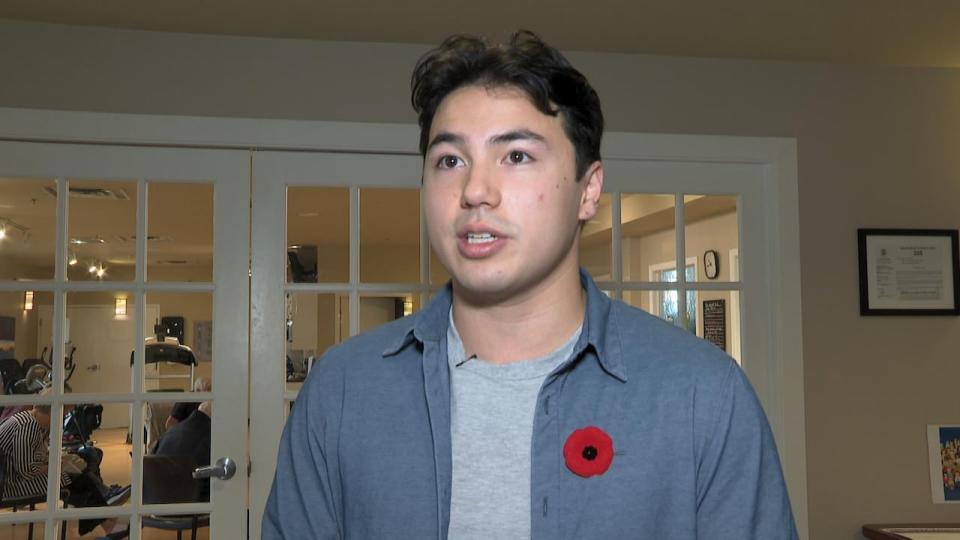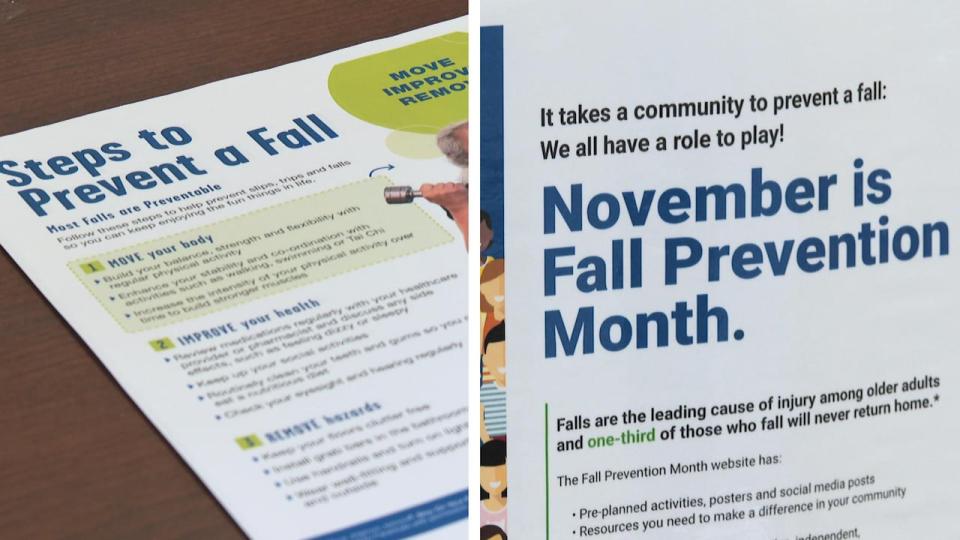Calgary PhD student partners with retirement community to test wearable fall-prevention technology for seniors

Falls are the leading cause of injury among seniors, according to data from the government of Canada, causing 85 per cent of injury-related hospitalizations for older people. November is fall prevention month, and as injuries from falling continue to be a cause for concern, a Calgary-based researcher is developing a new product to address this issue.
Jordan King is a PhD student at the University of Calgary in biomedical engineering with a specialization in wearable technology, and he's part of a team testing new technologies that could prevent older adults from falling.
The team is working on a wearable necklace-style device that uses electrical stimulus to hopefully prevent seniors from losing their balance, and a prototype is coming to a Calgary retirement community for testing.
"As people age, their vestibular system starts to decline," said King. The vestibular system is the body's balance system.
"We're hoping to improve the vestibular function and hopefully keep people off walkers or canes as long as we can, and to prevent falls, first and foremost."

Jordan King is a PhD student at the University of Calgary in biomedical engineering with a specialization in wearable technology. He hopes to have a working prototype of his fall-prevention device this week so residents of United Active Living will be able to test it out. (Taylor Braat/CBC)
According to data from the Public Health Agency of Canada, 70 per cent of older adults who were injured from falling down sought medical attention. Falls among seniors are a "serious public health issue" within Canada's aging population, notes the surveillance report.
Falls also cause 95 per cent of all hip fractures and $2 billion annually in direct health care costs, with 20 to 30 per cent of senior Canadians experiencing one or more falls every year.
Kera Redlack, the vice-president of wellness and employee engagement with United Active Living, says partnering with the university for this research was a "no-brainer" for the locally owned and operated retirement community in southwest Calgary.
"We've really tried to foster independence and maintain that for our residents, which is a big part of our active living philosophy, so this was a really easy integration," she said.
Redlack says the study and the presence of King within the seniors community has been exciting for residents, especially those who may not have had a lot of visitors or community connection opportunities throughout the COVID-19 pandemic.
"There's a lot of water cooler chit-chat about it."

Kera Redlack, the vice-president of wellness and employee engagement with United Active Living, says fall-prevention technology could improve seniors' quality of life. (Taylor Braat/CBC)
Redlack says this experience has generated a lot of dialogue between study participants and other residents, and there's "definitely a sense of overall improvement among participants."
"Finding strategies to improve somebody's ability to stay strong and have heightened balance, of course, reduces falls," she said, adding that this technology could help improve seniors' quality of life.
Necklace-style wearable tech
The U of C research team is working with Cortex Design, a Toronto-based product design company, to develop the wearable tech product, which now has three prototypes.
Up to this point, the researchers have been using a lab setup to test the technology behind the device. King says he hopes to have a working prototype this week so residents of United Active Living will be able to test it out.
"Moving forward, we're hoping to be able to streamline this process and be able to manufacture in large batches," he said.
King says he hopes that physiotherapists and occupational therapists will be able to use the product in clinical settings, and that it will be available for seniors to purchase and use themselves.
The device is worn around the neck, he explains, and the user also sticks some electrodes behind their ears.

Falls are the leading cause of injury among seniors, so the month of November is dedicated to fall-prevention awareness in Canada. (Taylor Braat/CBC)
"They could just be standing on the floor with their eyes closed for one minute … and then they can just press the 'stimulate' button and then they'll [use the device] for 20 minutes, or however long they need, and then that's it," said King.
"They could take it off after and put it away."
King's vision is for the device to be worn for 20 to 25 minutes. The study is focusing on using this device three times a week for six weeks, but the Calgary researcher says he wants to test using it five days consecutively, "to see if that would produce the same effect."
Most of all, the Calgary researcher and student says being able to work with older adults has been a good experience.
"They have so much to say about so many different parts of their lives and they help me with my life as well," King told CBC News.
"We've been able to help people that have been on walkers and get them off walkers with this treatment … hopefully that can be used for older adults in Canada and North America."


